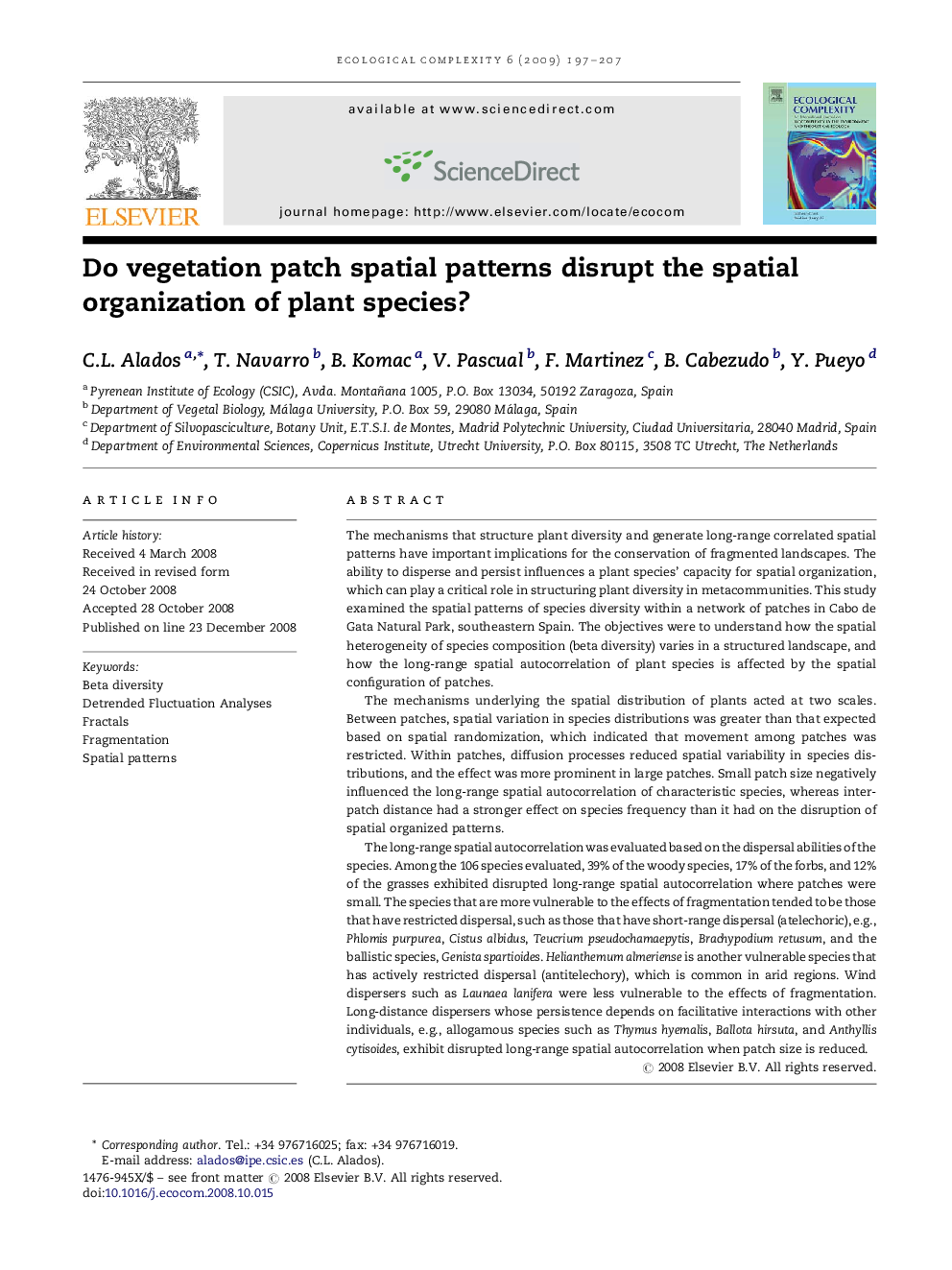| Article ID | Journal | Published Year | Pages | File Type |
|---|---|---|---|---|
| 4372728 | Ecological Complexity | 2009 | 11 Pages |
Abstract
The long-range spatial autocorrelation was evaluated based on the dispersal abilities of the species. Among the 106 species evaluated, 39% of the woody species, 17% of the forbs, and 12% of the grasses exhibited disrupted long-range spatial autocorrelation where patches were small. The species that are more vulnerable to the effects of fragmentation tended to be those that have restricted dispersal, such as those that have short-range dispersal (atelechoric), e.g., Phlomis purpurea, Cistus albidus, Teucrium pseudochamaepytis, Brachypodium retusum, and the ballistic species, Genista spartioides. Helianthemum almeriense is another vulnerable species that has actively restricted dispersal (antitelechory), which is common in arid regions. Wind dispersers such as Launaea lanifera were less vulnerable to the effects of fragmentation. Long-distance dispersers whose persistence depends on facilitative interactions with other individuals, e.g., allogamous species such as Thymus hyemalis, Ballota hirsuta, and Anthyllis cytisoides, exhibit disrupted long-range spatial autocorrelation when patch size is reduced.
Related Topics
Life Sciences
Agricultural and Biological Sciences
Ecology, Evolution, Behavior and Systematics
Authors
C.L. Alados, T. Navarro, B. Komac, V. Pascual, F. Martinez, B. Cabezudo, Y. Pueyo,
